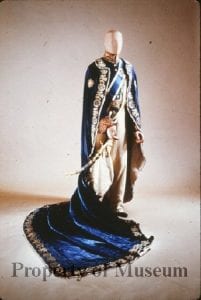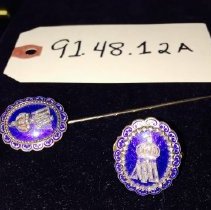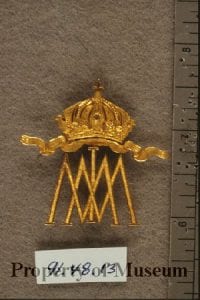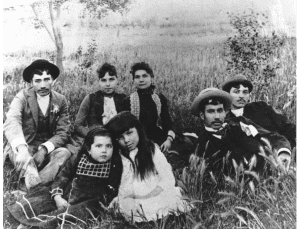
Santa Anna was a Mexican politician and general who held the office of president 11 times—sometimes for only as long as about three weeks. Although Santa Anna was forced from political office in 1855 and spent the rest of his life in exile, his specter influenced the political rhetoric around the Reform War and the Second French Intervention—and indeed all of Mexican history from 1822 onward.
Cinco de Mayo is the annual commemoration of the victory of Mexican troops over the French Empire at the Battle of Puebla in 1862. While the Battle of Puebla was a significant battle in the Mexican resistance to French colonization, it is not Mexican Independence Day, which is September 16. Cinco de Mayo is more popular outside of Mexico than inside, with celebrations in the American Southwest dating back to the 1860s. The holiday spread from the American Southwest to the rest of the US, becoming a nationally celebrated holiday in the 1980s. Advertisement campaigns in the 1980s changed the meaning of Cinco de Mayo for mainstream America and the memory of the Battle of Puebla is largely absent from national celebrations.
French Imperialism and Mexico

Maximillian I was emperor of Mexico for a little over three years, before he was executed. The story goes that the ring and stick pin were used as bribes by Maximillian’s secretary to try and negotiate for Maximillian’s release, but there were no takers.
In 1862, Mexico had just finished a Civil War called the Reform War. The Reform War was fought between conservatives, who wanted to keep the power within the military and the Catholic Church, and the Liberals, who wanted to create a nation-state founded on liberal ideas like the separation of church and state. Ultimately the Liberals won the Reform War, but the Conservatives were waiting in the wings for another chance at power. That chance appeared when Mexican President Benito Juarez stopped debt payments to foreign countries who had helped finance the Reform War. The Mexican Government was broke, and stopped paying war debts to focus on making sure other government functions had money to operate. European countries like Britain and France were outraged, and Mexican Conservatives opened a backdoor to France to invade Mexico and restore what they considered to be legitimate rule. In 1861, French troops landed in Mexico and started toward Mexico City. So began the Second French Intervention in Mexico.
The Battle of Puebla in 1862, one of the first major battles of the Second French Intervention, stunned the world: the Mexican forces were outmanned and outgunned and should have lost. This victory, however, was only the beginning of the story. The French Imperialists retreated and regrouped. A second Battle of Puebla was fought just over a year later, and Mexican forces were not so successful in warding off the French. By the summer of 1863, Ferdinand Maximillian of Austria became the Emperor of Mexico and put the Conservatives back in power. He ruled as emperor until 1866 when he was executed just a little over three years after becoming emperor.
Historic Celebrations of Cinco de Mayo

This brooch probably did not belong to the Imperial family, but was rather probably a gift to a friend or political ally.
Cinco de Mayo became a national holiday in Mexico in 1862, and celebrations in the US began the next year. As is true today, each community celebrated Cinco de Mayo differently. Some communities had city-wide parades, while others had small private gatherings; some communities chose not to celebrate at all, where others had events for days leading up to Cinco de Mayo. Here’s an example of a Cinco de Mayo celebration in Nogales, Sonora from 1924 (as reported by the “Cinco de Mayo Celebration at Nogales Monday,” Arizona Daily Star May 3, 1924):
Saturday Night [May 3]
- Crowning of the queen of the festival, Miss Concha Corella, at the Southern club. Dances at the Southern club and Fashion Dance Garden.
Sunday
- Dances at the Fashion Dance Garden and Southern club
Monday
- 6 a.m.– Flags will be floated from all public buildings in Nogales, Sonora. Salute by 12 cannon. Music by military band through principal thoroughfares of city.
- 9 a.m.– Grand civic and military parade, ending at Mexican custom house where the principle events of the day’s program will take place.
- 12 m.– Noon. Salute by 21 cannon.
- 3 p.m.– Exhibition of decorated autos and carriages, with the queen of the festival present.
- 4 p.m.– Battles of flowers. Serpentine and confetti battles.
- 8 p.m.– Grands serenade at the plaza. Beautiful fireworks display.
- 9 p.m.– Cinco de Mayo dances at Southern club, Fashion Dance Garden, and Karam hall.
Sometimes international dignitaries participated in the celebration. In 1933, then Arizona Governor Sidney Preston Osborn and former Arizona Governors Thomas E. Campbell and Robert Jones attended a Cinco de Mayo celebration in Nogales, Sonora to pledge “enduring friendship between Mexico and the United States.” (“Osborn Wires FDR of Fete,” Tucson Citizen, May 6, 1941)

Urquides’s Family Cinco de Mayo celebration, 1890. This picture was taken near the Santa Cruz River in Tucson, Arizona. The donor, Maria Urquides, was a beloved teacher and nicknamed the mother of bilingual education.
Chicanos and Cinco de Mayo
Cinco de Mayo had been popular with Mexican Americans because it proved that Mexican people, culture, and values could succeed against all odds. What is now the American Southwest was, in the 1860s, only recently American–and so too were the people that lived there. As more Anglo Americans started moving West for access to land and other natural resources, Mexicans living in California, Arizona, and New Mexico found that their new neighbors did not always appreciate or respect their customs. Cinco de Mayo became a way to celebrate being Mexican in places where Mexican people were increasingly unwelcome. Mexican people also used Cinco de Mayo celebrations as a way to symbolically fight imperialism. Because of the anti-imperialist nature of the holiday, the Chicano Movement popularized Cinco de Mayo celebrations as a political expression in addition to a celebration of Mexican heritage.
Respectfully Celebrating Cinco de Mayo
It’s important to remember that, while Cinco de Mayo can be a fun celebration of Mexican heritage, it commemorates a battle where people fought and died to protect themselves from colonization. Patronizing your favorite local Mexican restaurant or cantina for dinner and drinks on Cinco de Mayo is always a good idea, but celebrate respectfully. One person’s costume is another person’s lived experience, and all of us carry the triumph and trauma of our ancestors with us every day. If you’re celebrating with kids, consider doing some crafting: paper flowers and cascarones are popular traditional celebratory handicrafts. Or! Maybe pick up a new book to read! Here are some recommendations from Curator of Education, Jaynie Adams:
Discover More
- David E. Hayes-Bautista, El Cinco de Mayo: An American Tradition
- Paloma Martinez-Cruz, Food Fight! Millennial Mestizaje Meets the Culinary Marketplace
- Rick Martinez, “This Is Taco Nation,” Bon Appetit (https://www.bonappetit.com/story/taco-nation)
- James Griffith, Hecho a Mano: The Traditional Arts of Tucson’s Mexican American Community
Children’s Books
- Amanda Doering, Cinco de Mayo: Day of Mexican Pride
- Lisa Bullard, Marco’s Cinco de Mayo
Explore More Activities
Contact the Arizona Historical Society
Jaynie Adams, M.A.
Museum Education Curator
Email Jaynie



